Fresh off the workstand and ready for an upcoming review is this slick 2019 Merida One-Twenty trail bike. Ooh er!
As the shiniest mountain bike to join the Merida full suspension lineup, the latest One-Twenty is a ground-up redesign of the previous model, and takes many of its design cues from the latest One-Sixty and One-Forty – two bikes that we’ve tested and reviewed favourably after they impressed us with their robust frames, balanced geo and quality suspension design.
The One-Twenty incorporates much of the same technologies found on its big-travel siblings, and packages them into a lighter, shorter-travel trail bike that features 120mm of suspension out back, with either 120-130mm of travel up front, depending on the model.
You can have it with 29in wheels (all four sizes, Small through to X-Large) or for the less vertically endowed, you’ve got the option of a 27.5in version too (Small and Medium frame size only).
In the past, you wouldn’t exactly have called Merida’s full suspension mountain bikes ‘progressive’, but this new One-Twenty is a little different. Packed with some forward-thinking frame features and a contemporary spec package, this green machine plans to have a red-hot crack at challenging your preconceptions.
So without further ado, let’s dive in and have a gander at some of the highlights eh?
1. Slick CF4 Carbon Fibre Frame
Of course the heart of any bike is the frame, and in this case it’s pretty dang impressive.
The bike we’ll be reviewing is the One-Twenty 8000, which sits one step down from the top 9000 model. These two bikes get a full CF4 carbon fibre frame that’s claimed to weigh 2779g (Medium frame, including shock & hardware), which is purportedly 400g lighter than the old model.
Perhaps more impressive again, is the weight difference between this CF4 frame and the full-alloy frames found on the cheaper One-Twenty models. According to Merida, the carbon frame is nearly a kilo lighter (915g to be specific), which is an enormous difference! In percentage terms, that’s around a 25% weight drop.
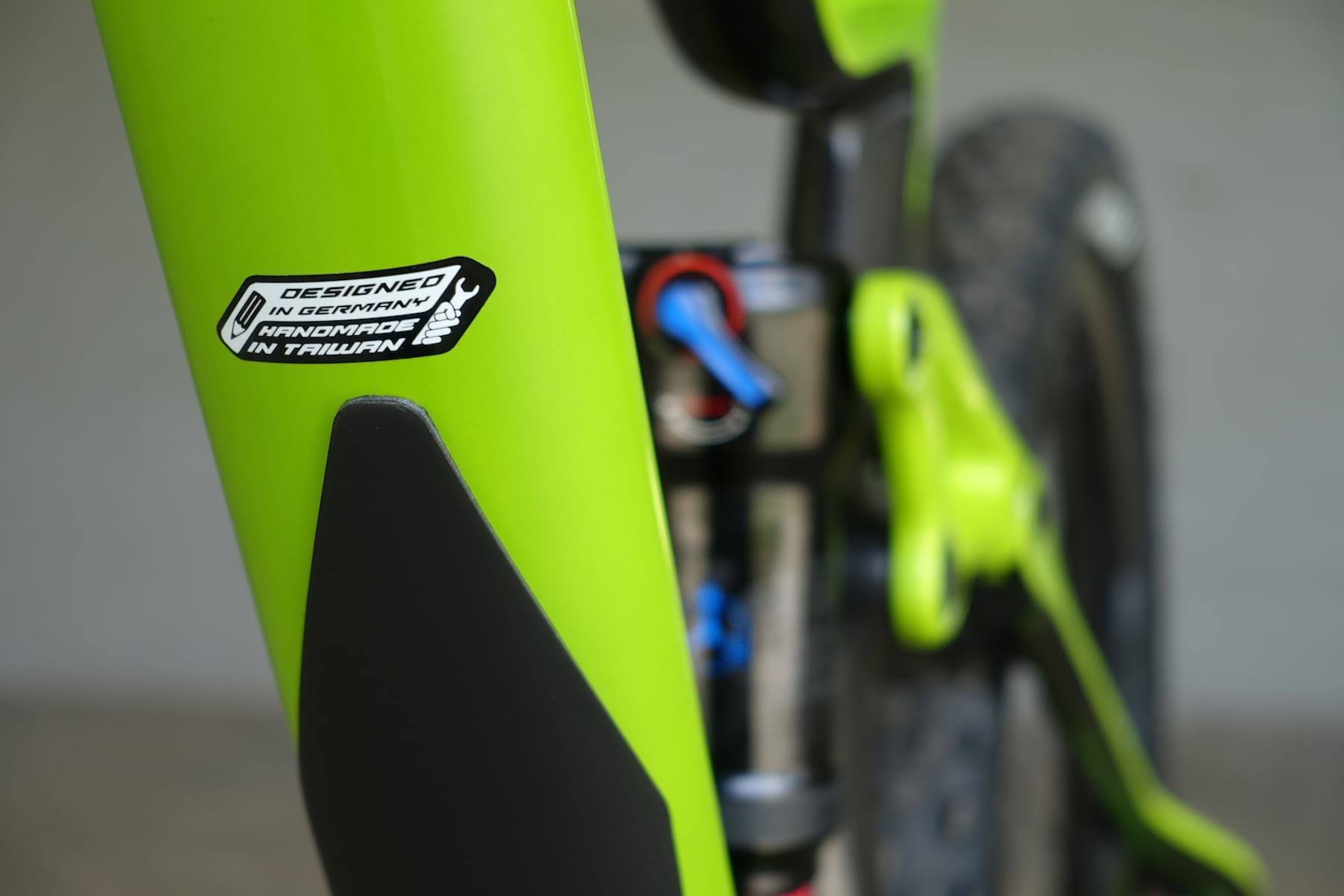
Highlights for the new One-Twenty chassis include Boost thru-axles front and rear, the Float Link suspension design, and a stocky tapered head tube with direct-fit bearings. Out back are post-mount tabs, which tuck the rear disc brake calliper in to protect it behind the seatstay. Of note is the minimum 180mm rotor size, which gives a little clue as to what Merida has designed this bike for.
Burly seat and chainstay tubes have been bridged for stiffness, but while rear tyre clearance has increased, the recommended maximum width is still only 2.35in. If you’re after a bike to fit the new-school 2.6in rubber, look elsewhere. Fitted to our test bike is a Maxxis Forekaster, which measures true to the claimed width of 2.35in.
2. Improved Geometry
Frame geometry has been significantly tweaked over the older model, with a slacker 67.3° head angle, a steeper 75.5° seat angle, and more standover clearance. Chainstays have been snipped by 10mm to come in at 435mm on the 29er.
With a slacker head angle and longer front centres, the whole wheelbase has been extended too. Reach measurements are: 415mm (S), 435mm (M), 455mm (L) and 475mm (XL).
3. Big-Stroke RockShox Deluxe Shock
Merida continues on with its Float Link suspension design, which is based around a single-pivot platform with a rocker-driven rear shock. Rather than mounting the base of the shock to the mainframe though, Merida bolts it onto the chainstay tube, which sees the shock ‘floating’ inside the linkage. A design also used elsewhere – like on the Trek Fuel EX – this arrangement apparently offers more tuning capability, and potentially more progression at the end of the travel.
Speaking of, rear travel is 120mm, and Merida has chosen to deliver that via a big volume RockShox Deluxe RT3 rear shock that comes with a DebonAir can and a substantial 55mm stroke. Doing the math, that delivers an average leverage ratio of 2.18:1, which is very low for a trail bike like this one. I suspect that’ll mean operating pressures will be relatively low compared to other full suspension bikes I’ve been testing lately.
4. The Stout RockShox Pike RCT3 Fork
Though some models come with a shorter 120mm travel fork, this particular One-Twenty is equipped with a 130mm travel RockShox Pike. Along with its robust 35mm tapered alloy stanchions, the Pike features the sealed Charger2 damper with external control of low-speed compression and rebound damping.
The spring side houses the latest DebonAir spring, with a larger negative volume that’s designed to help improve early-stroke suppleness, while also increasing mid-stroke support.
Down the bottom of the magnesium one-piece lowers you’ll find a 15mm diameter bolt-up axle spaced 110mm wide. Like the rear of the One-Twenty, the Pike is also designed to fit a direct-mount calliper with a 180mm rotor, which looks tidy. Like all of RockShox’s latest forks, the Pike is Torque Cap compatible, and Merida has spec’d matching hub end caps.
5. Wide Carbon Wheels From FSA
The FSA Gradient LTD wheelset is an interesting spec choice from Merida, mostly because I’ve not had any experience with these hoops up until now. They look pretty solid on paper though, with asymmetric carbon fibre rims that measure 35mm wide externally and 29mm internally.
The hookless rims are 3mm thick at the bead and are tubeless compatible.
FSA builds the Gradient LTD wheels with 24x straight-pull, flat-bladed spokes (per wheel) and its own alloy hubs. These have sealed bearings and adjustable preload, with the rear hub featuring a 6-pawl mechanism that delivers 52 engagement points.
Confirmed weight for the wheelset is 1720g, which includes the pre-fitted tubeless tape. Tubeless valves also come supplied with the bike, so all you need is some sealant to setup the Maxxis tyres tubeless.
6. The Aggro Maxxis Minion DHR II 3C Front Tyre
To match the burly carbon wheels, Merida has spec’d an aggressive Maxxis Minion DHR II tyre up front, complete with a 2.4in Wide Trail casing and triple-compound rubber. The DHR II is one of our favourite tyres for tackling loose, rocky and technical trails (see James’ recent review if the DoubleDown version), so it’s pretty rad to see a tyre like this on a bike that would have probably come with lightweight, paper-thin tyres only a few years ago.
7. DH-Certified SRAM Code RSC Brakes
Another clue as to what Merida wants you to do with the One-Twenty lies in the addition of properly powerful SRAM Code RSC brakes. Whereas most brands would spec the Level or Guide brakes on a bike like this, Merida went all in with Codes. Designed primarily as a downhill brake, we’ve actually been getting along really well with these 4-piston stoppers on trail and enduro bikes too. In fact, they won the Best Overall award in our disc brake group test in Issue #115.
8. A Proper 150mm Travel Dropper Post
For a medium-sized rider like me, it’s nice to see Merida fitting a decent 150mm stroke dropper post on the Medium frame size, when other bikes (like the Giant Trance 29 I’m also testing) often come with shorter 125mm droppers. In this case we’ve got a 150mm KS LEV Integra dropper, complete with a slick-black ano finish and the superb Southpaw handlebar remote.
9. The Little Things
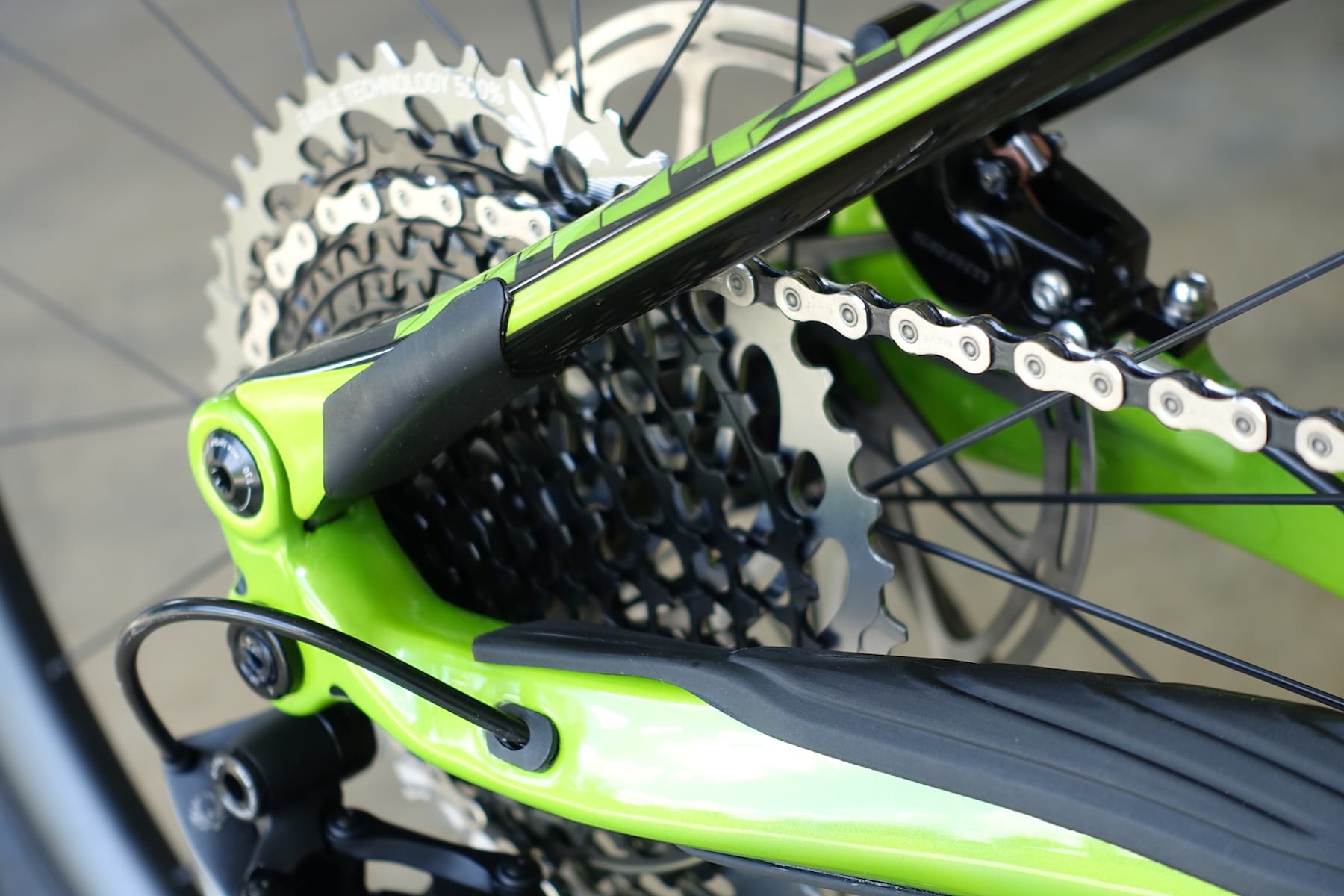
The CF4 frame on the One-Twenty 8000 comes equipped with a load of neat details, including internal cable routing through the downtube that uses full-size alloy plugs just behind the head tube. These alloy plugs actually clamp down on the cable, allowing you to pull it taut inside the frame, before bolting the plug in place, minimising cable rattle. Tidy.
You’ll also find thick, rubber stick-on armour used underneath the downtube and around the driveside chainstay and seatstay, which is there to protect the frame and deaden chain slap.
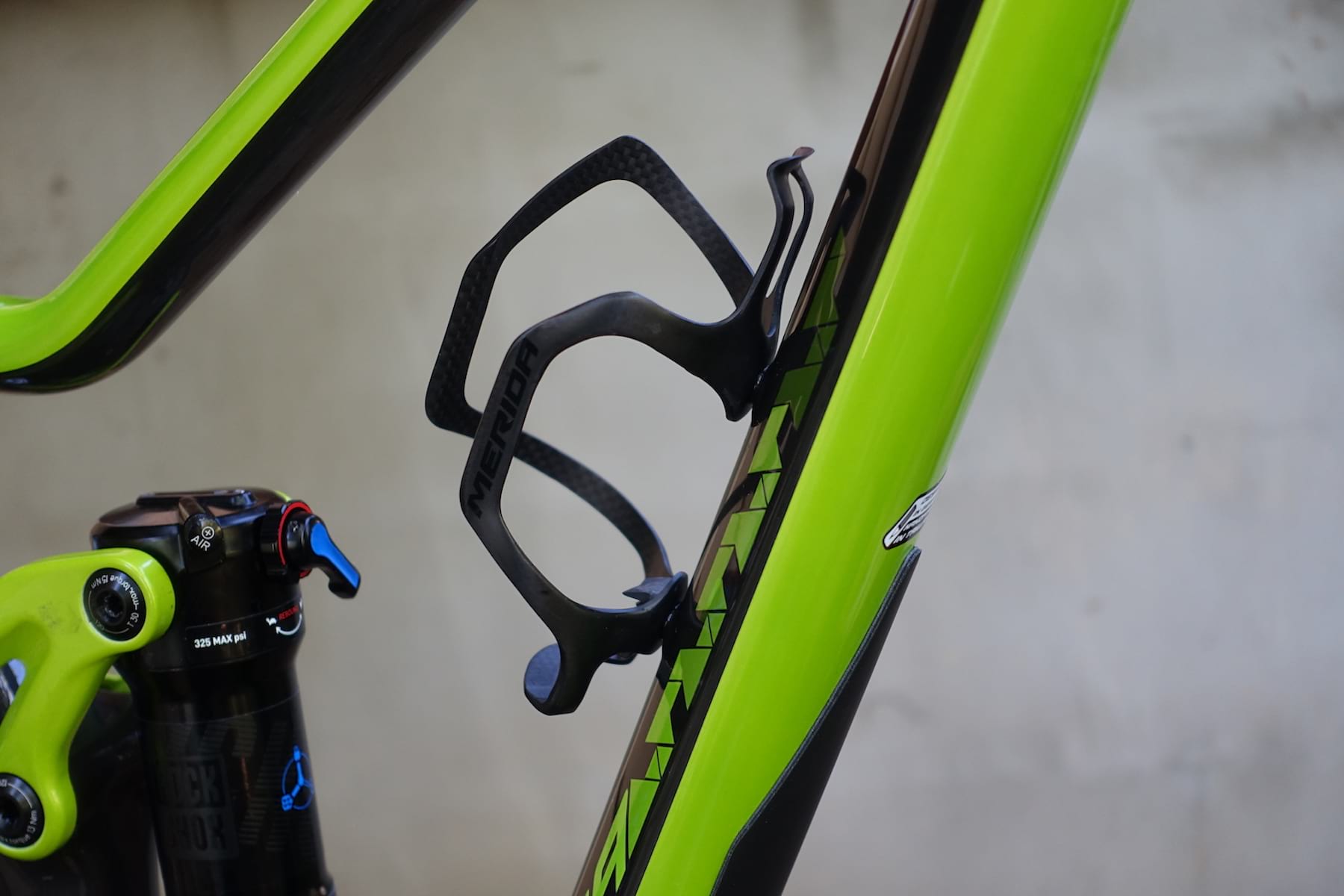
Along with a couple of extra Bottomless Tokens and the tubeless valves, the One-Twenty also comes with a side-entry bottle cage and a front mudguard included in the box. They’re only little things, but they’re essentials that you’d have to go out and buy otherwise.
And there you go – that’s a bit of a highlights tour of the latest test bike to join the Singletrack test fleet. I’ll be riding the One-Twenty over the coming weeks for a full, in-depth review for the Singletrack website, along with a video review for YouTube. I’ll also be doing a Live Q&A on the bike, so make sure you subscribe to our YouTube channel to check that video out, along with loads more coming your way.
How will the One-Twenty compare to other trail bikes in this segment, such as the Specialized Stumpjumper ST, GT Sensor, Trek Fuel EX, Canyon Neuron CF, and Giant Trance 29? Stay tuned for the rundown!
2019 Merida One-Twenty 8000 Specs
- Frame // CF4 Carbon Fibre, 120mm Travel
- Fork // RockShox Pike RCT3, 130mm Travel
- Shock // RockShox Deluxe RT, 185x55mm, Trunnion Mount
- Hubs // FSA Gradient LTD, 110x15mm Front & 148x12mm Rear
- Rims // FSA Gradient LTD, 29mm Internal Width, Tubeless Ready
- Tyres // Maxxis DHR II 3C MaxxTerra EXO 2.4in WT Front & Forekaster EXO 2.35in Rear
- Crankset // SRAM Descendant, 32t X-Sync 2 Chainring
- Rear Mech // SRAM XO1 Eagle, 12-Speed
- Shifters // SRAM XO1 Eagle, 12-Speed
- Cassette // SRAM Eagle, 10-50t, 12-Speed
- Brakes // SRAM Code RSC, 180mm rotors
- Stem // Merida Expert TR, 60mm Length
- Bars // Merida Expert TR, 20mm Rise, 760mm Wide
- Grips // Merida Lock-On
- Seatpost // KS LEV Integra, 150mm Travel
- Saddle // ProLogo Nago X20
- Size Tested // Medium
- Sizes Available // Small, Medium, Large, X-Large
- Confirmed Weight // 12.69kg / 27.92lb
- RRP // £6,000 / $6,999 AUD






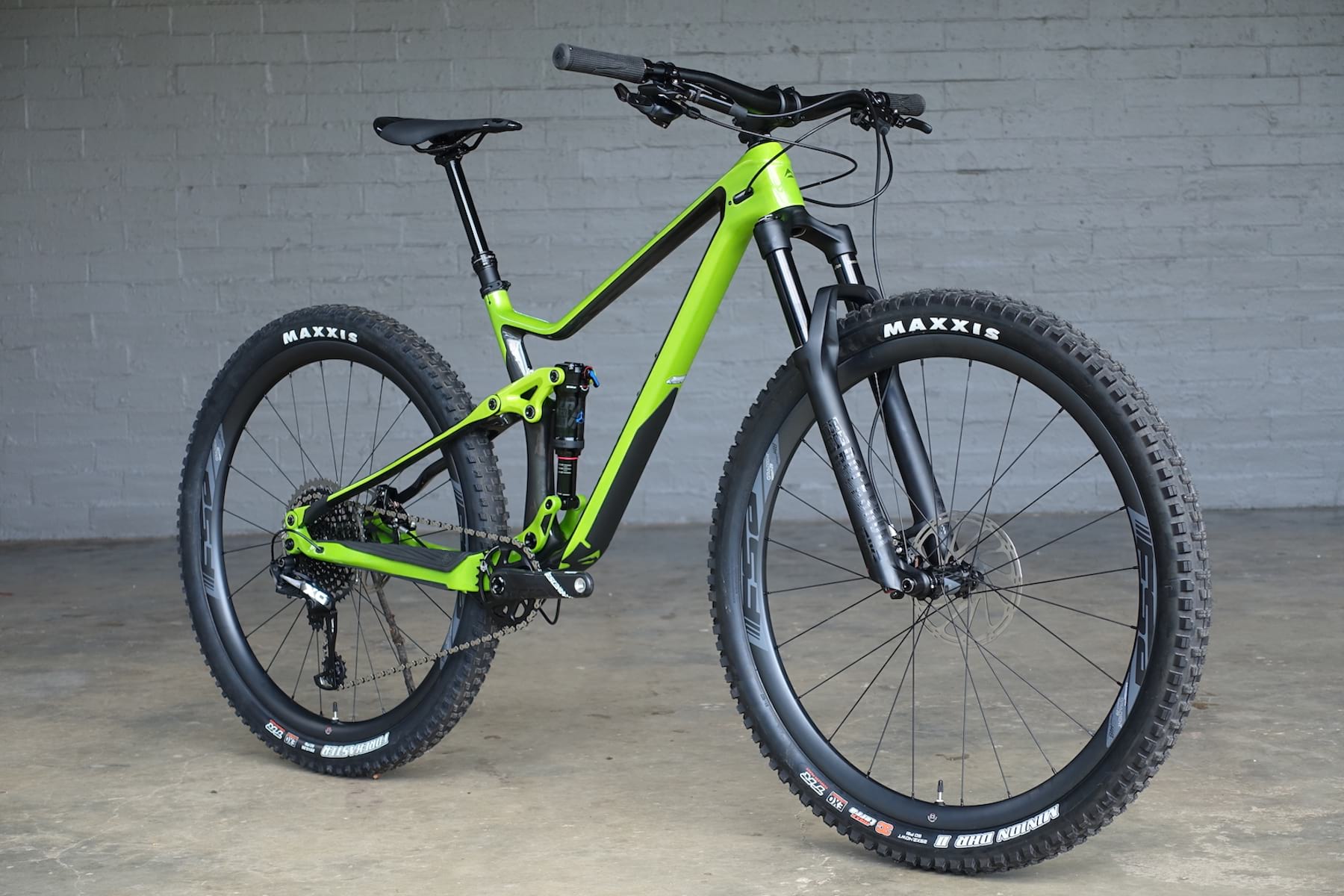

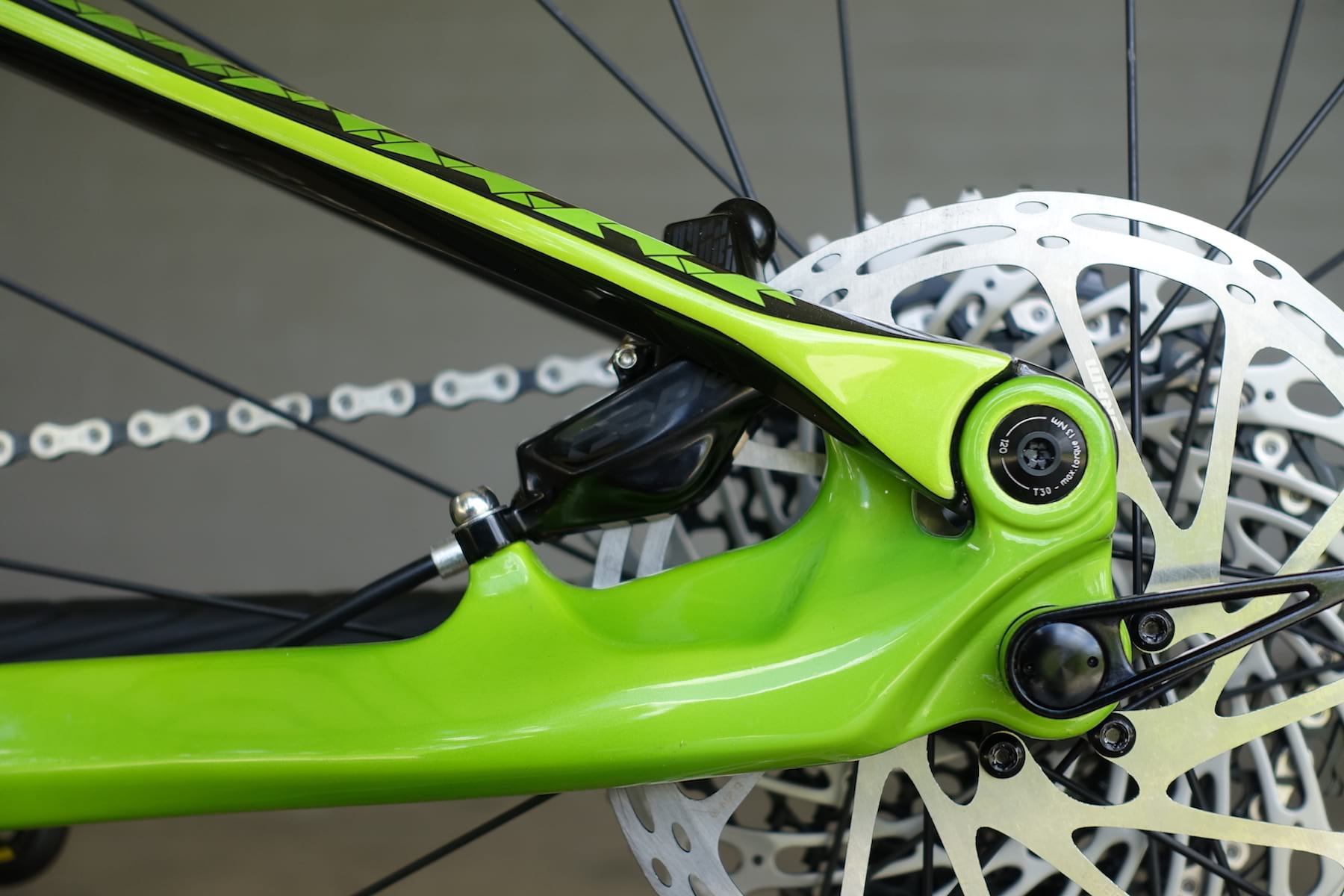
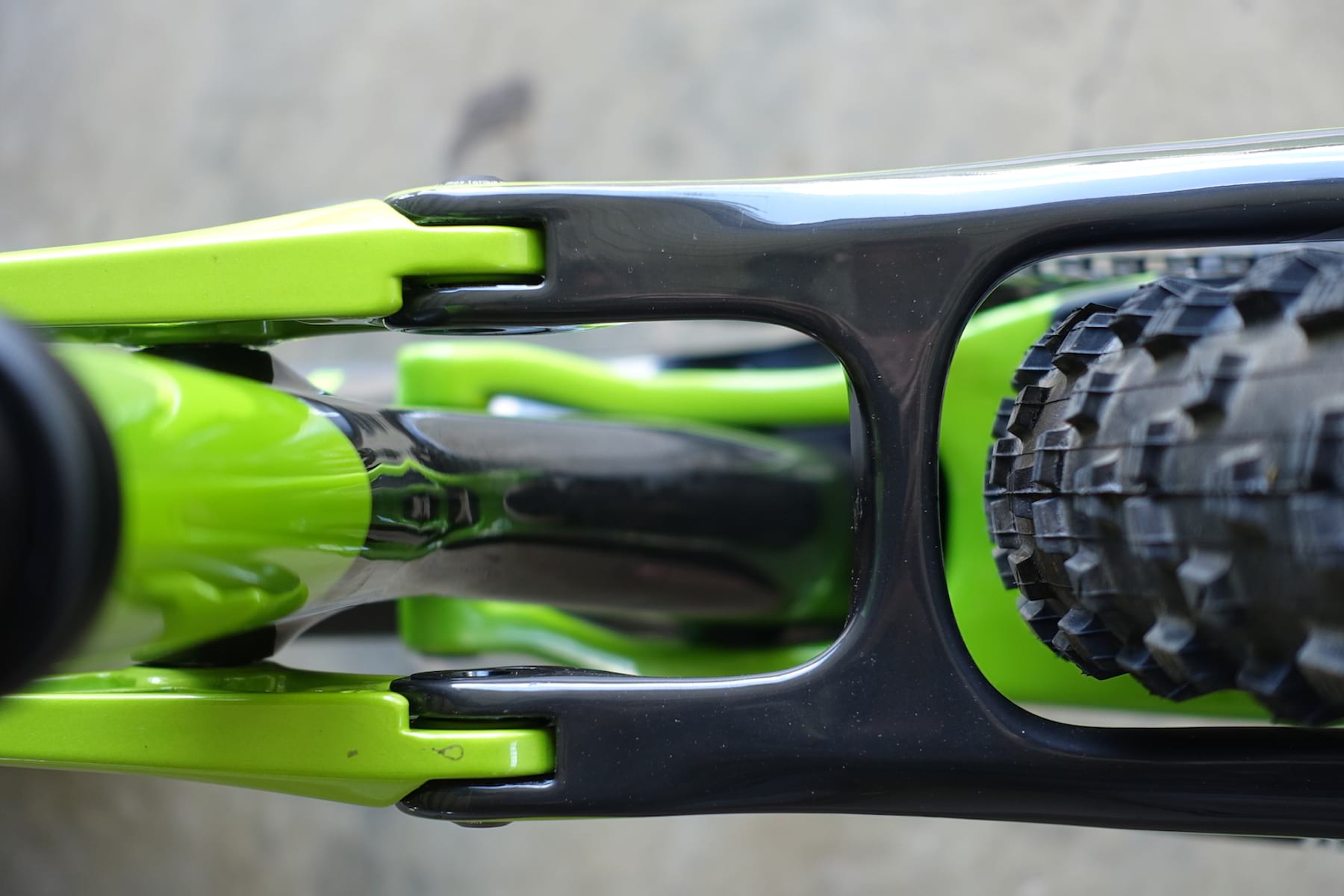
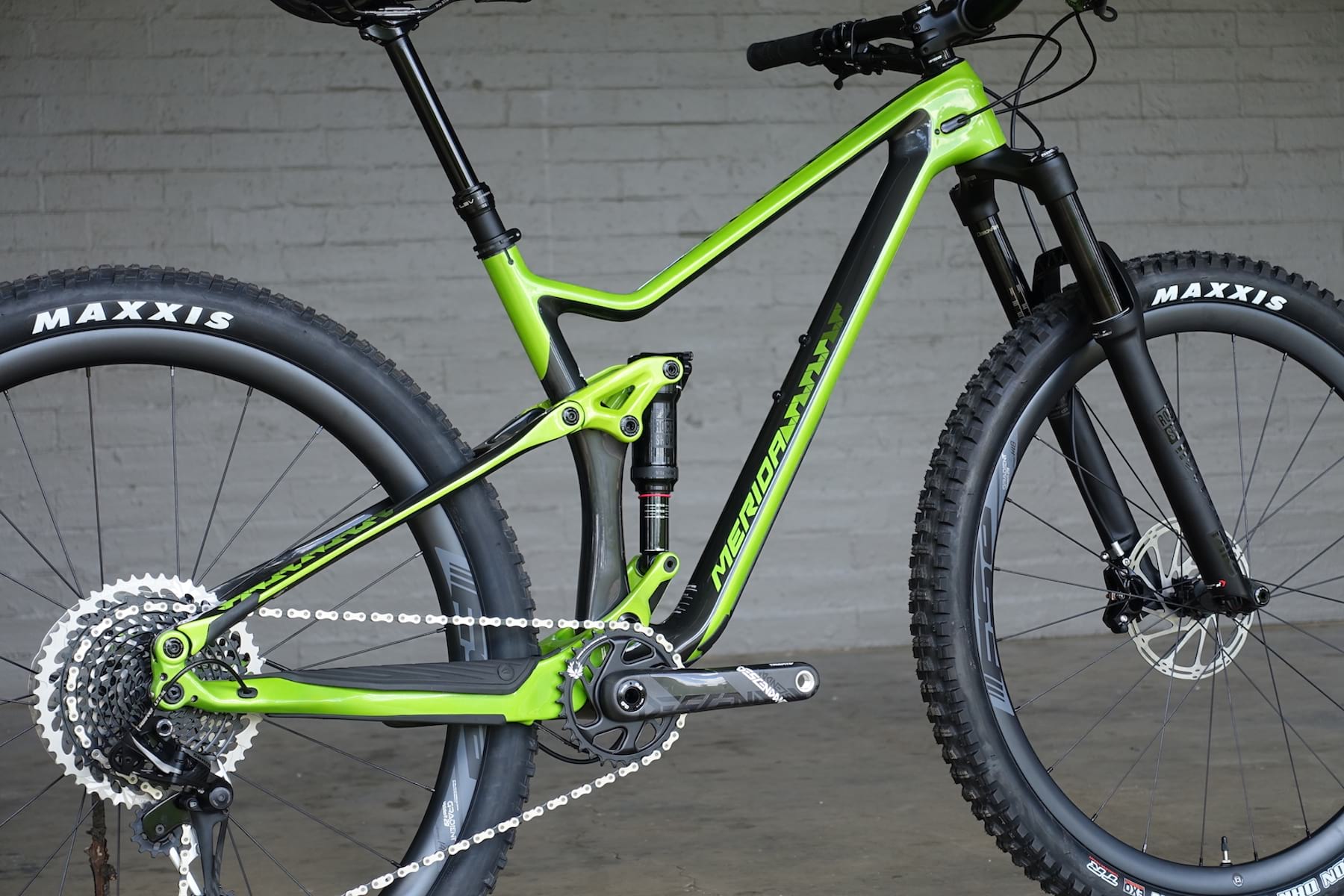
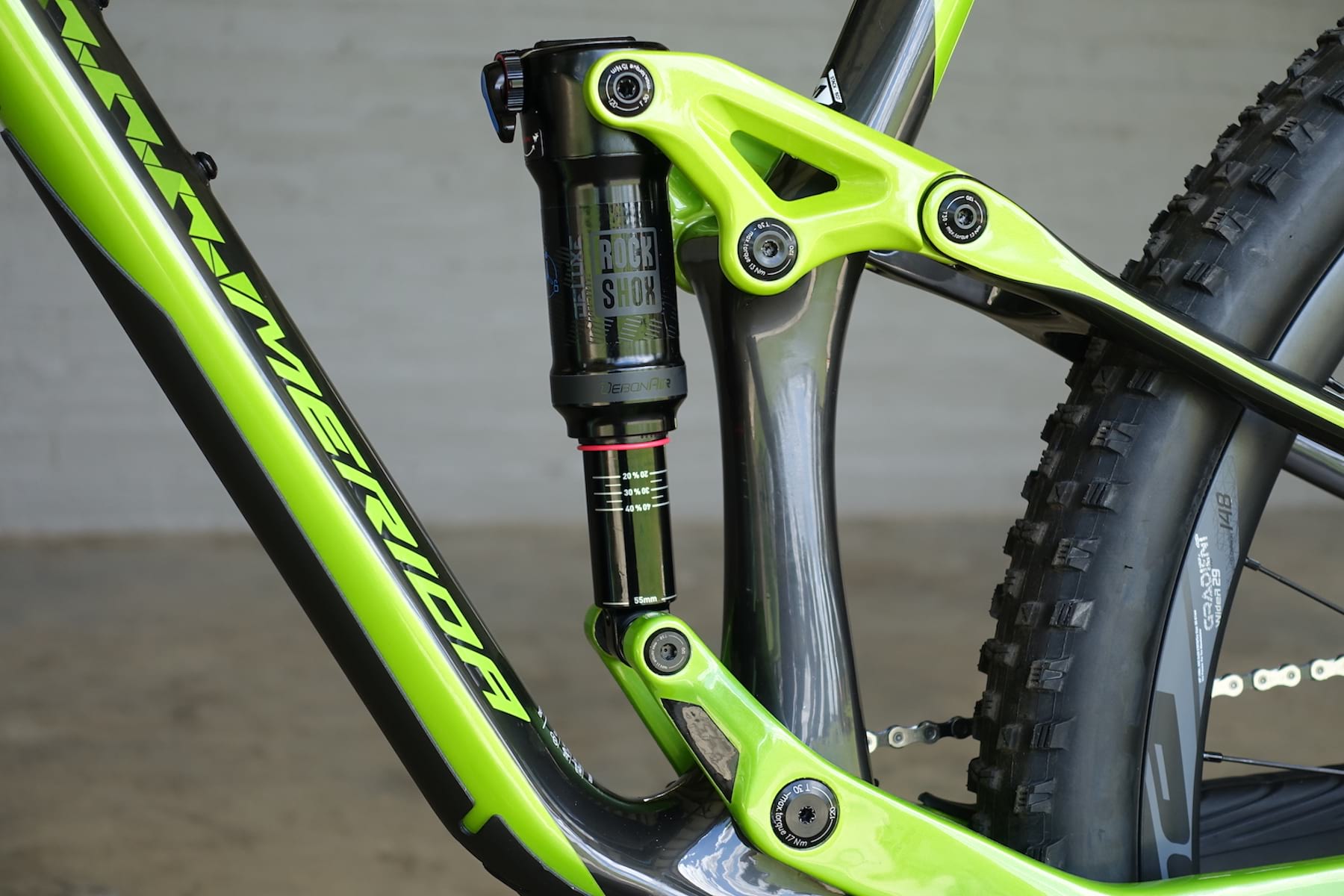
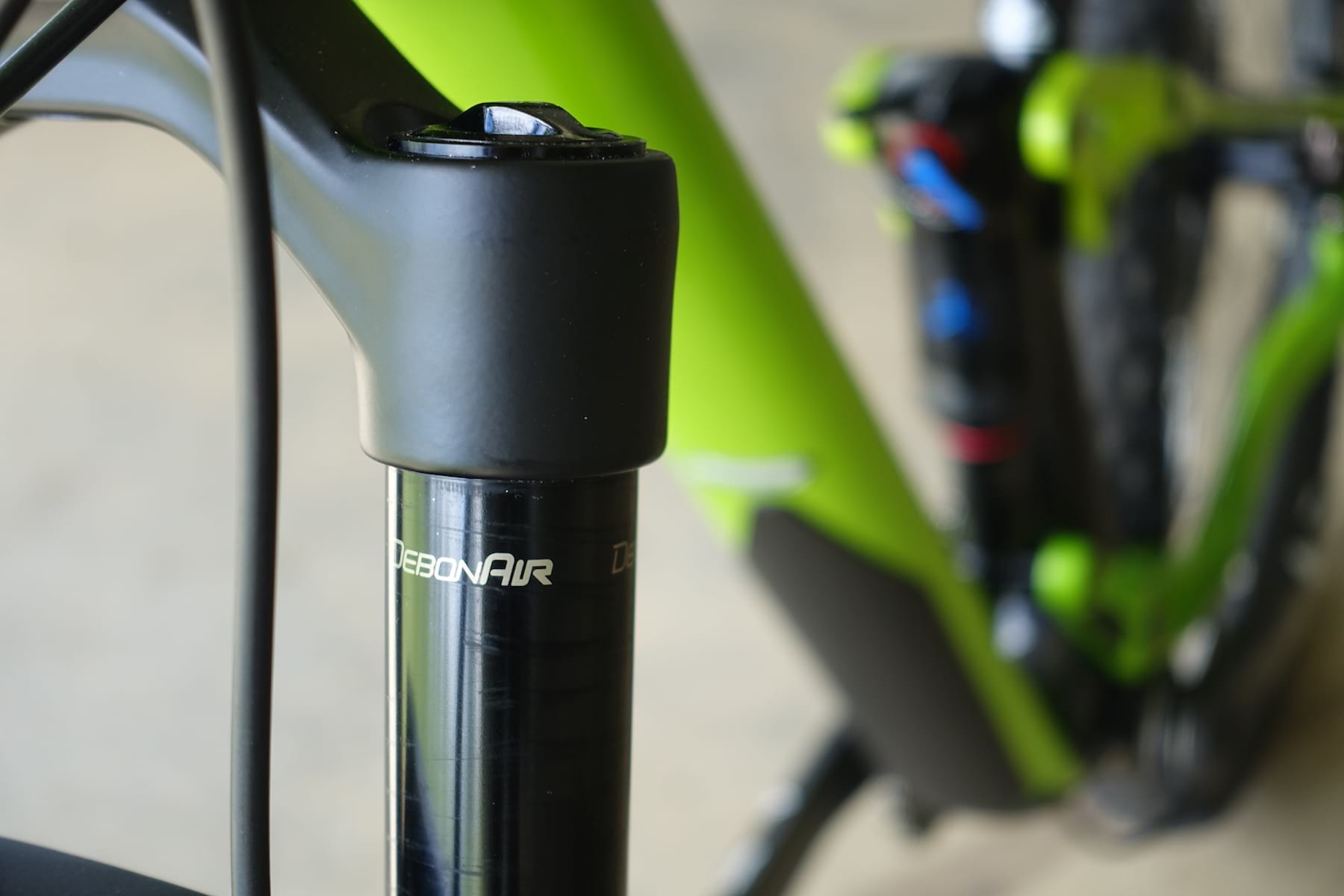
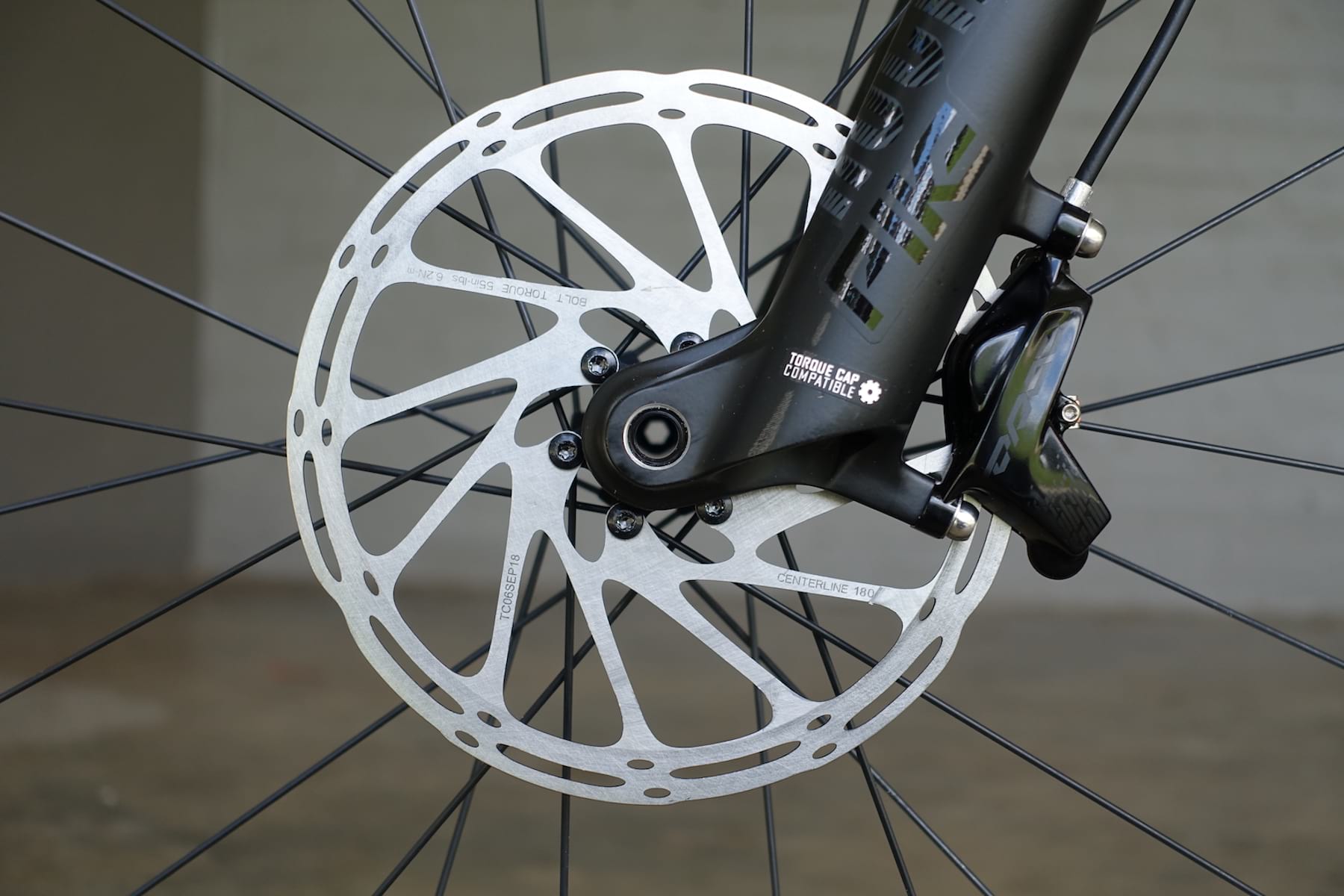
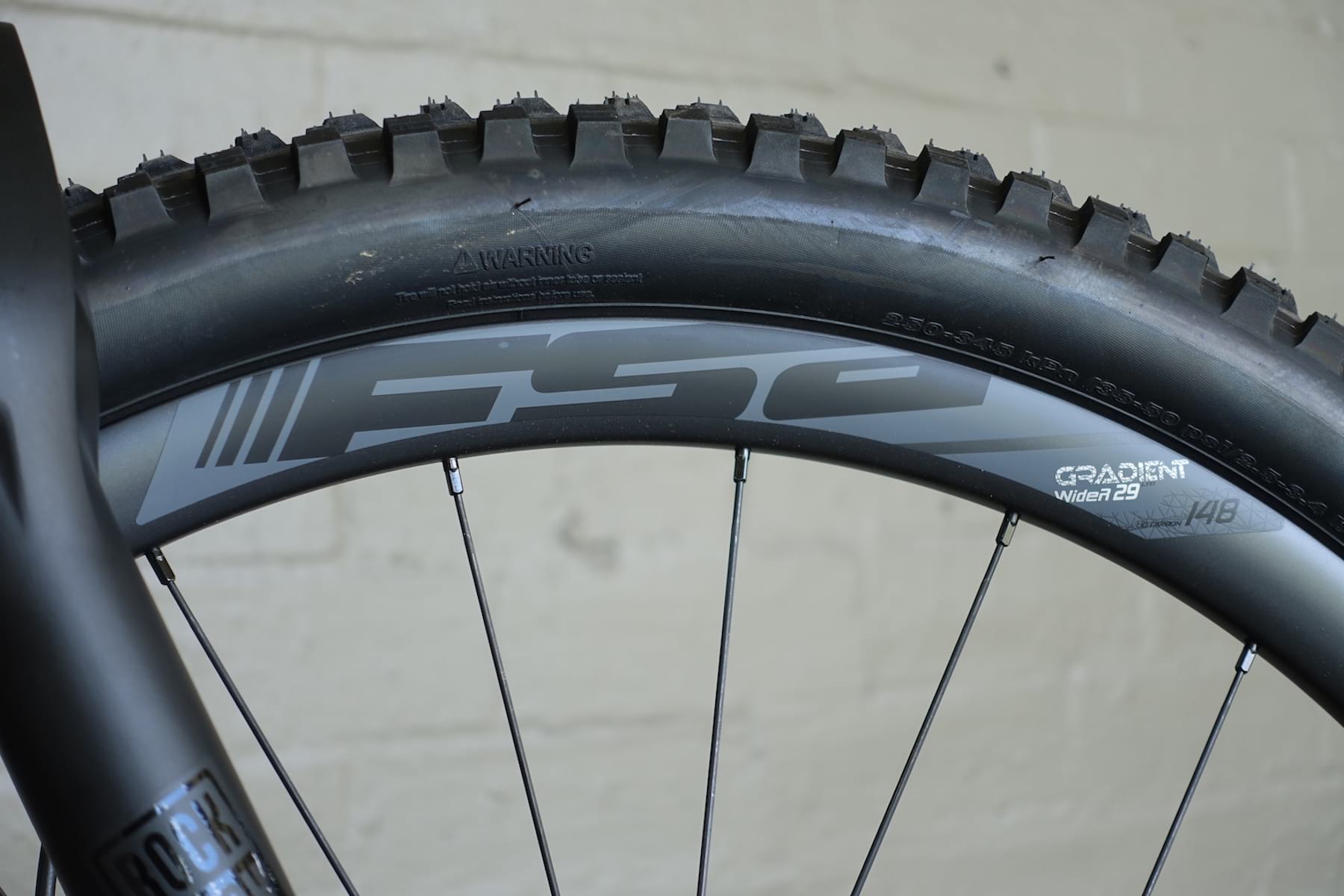
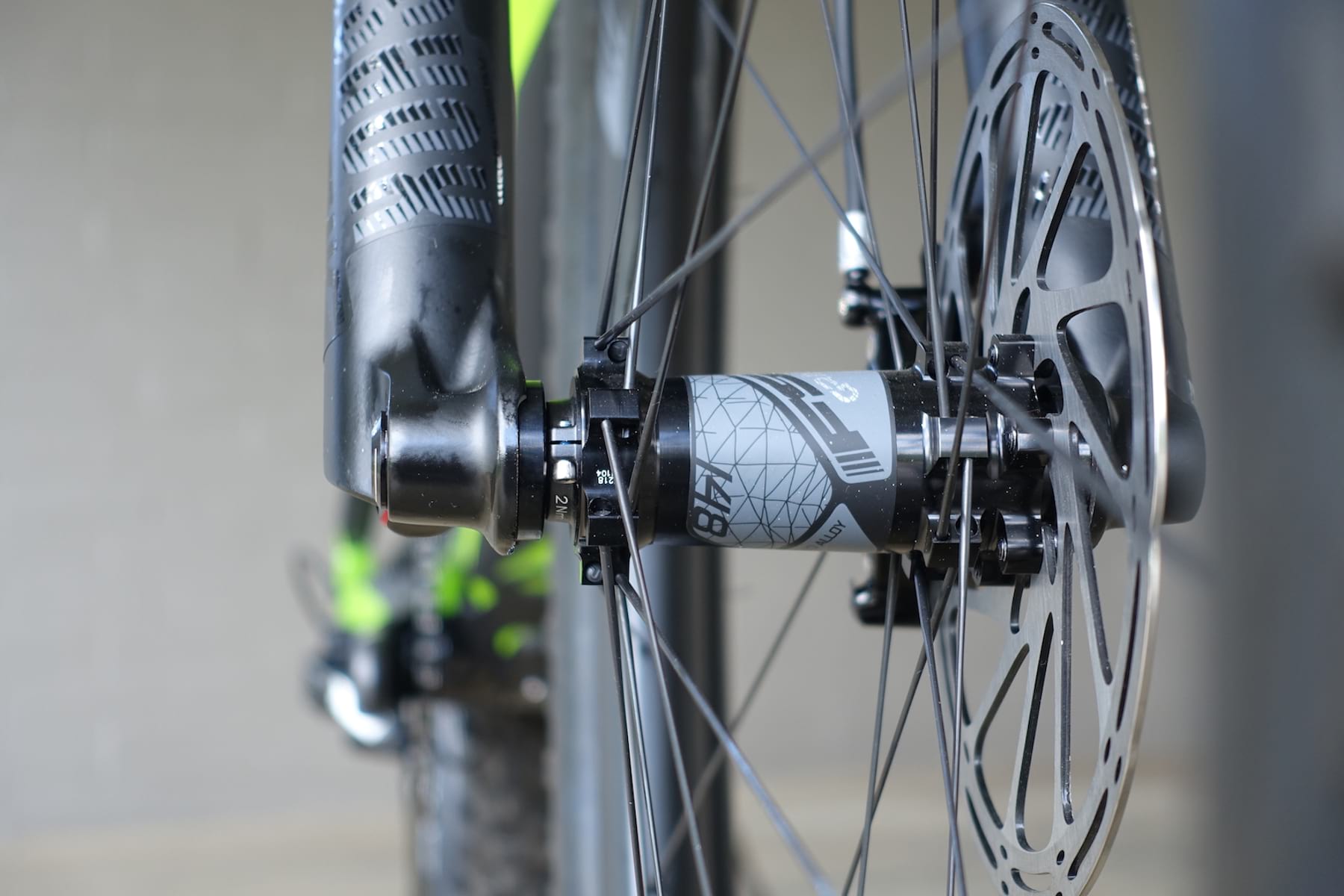

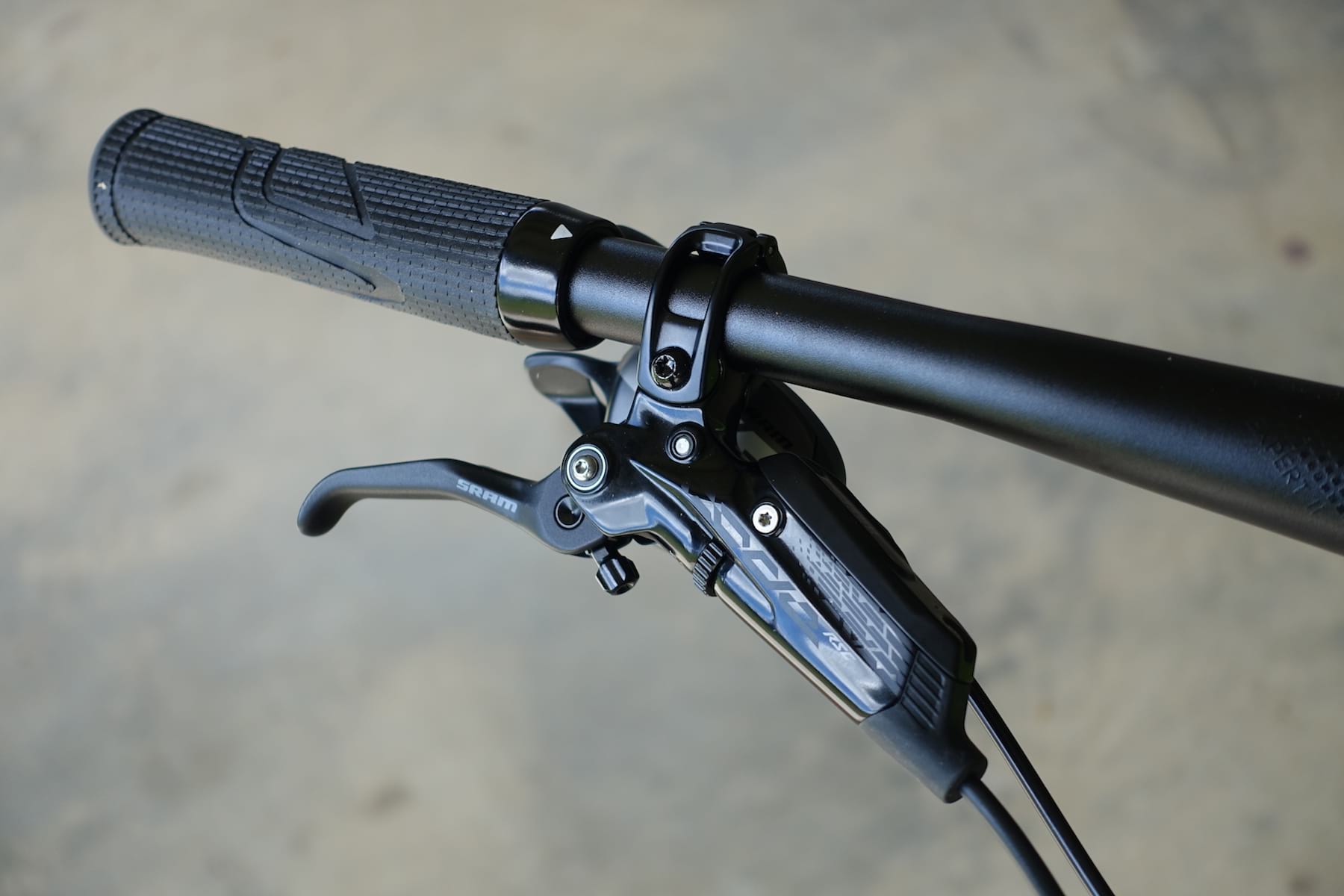
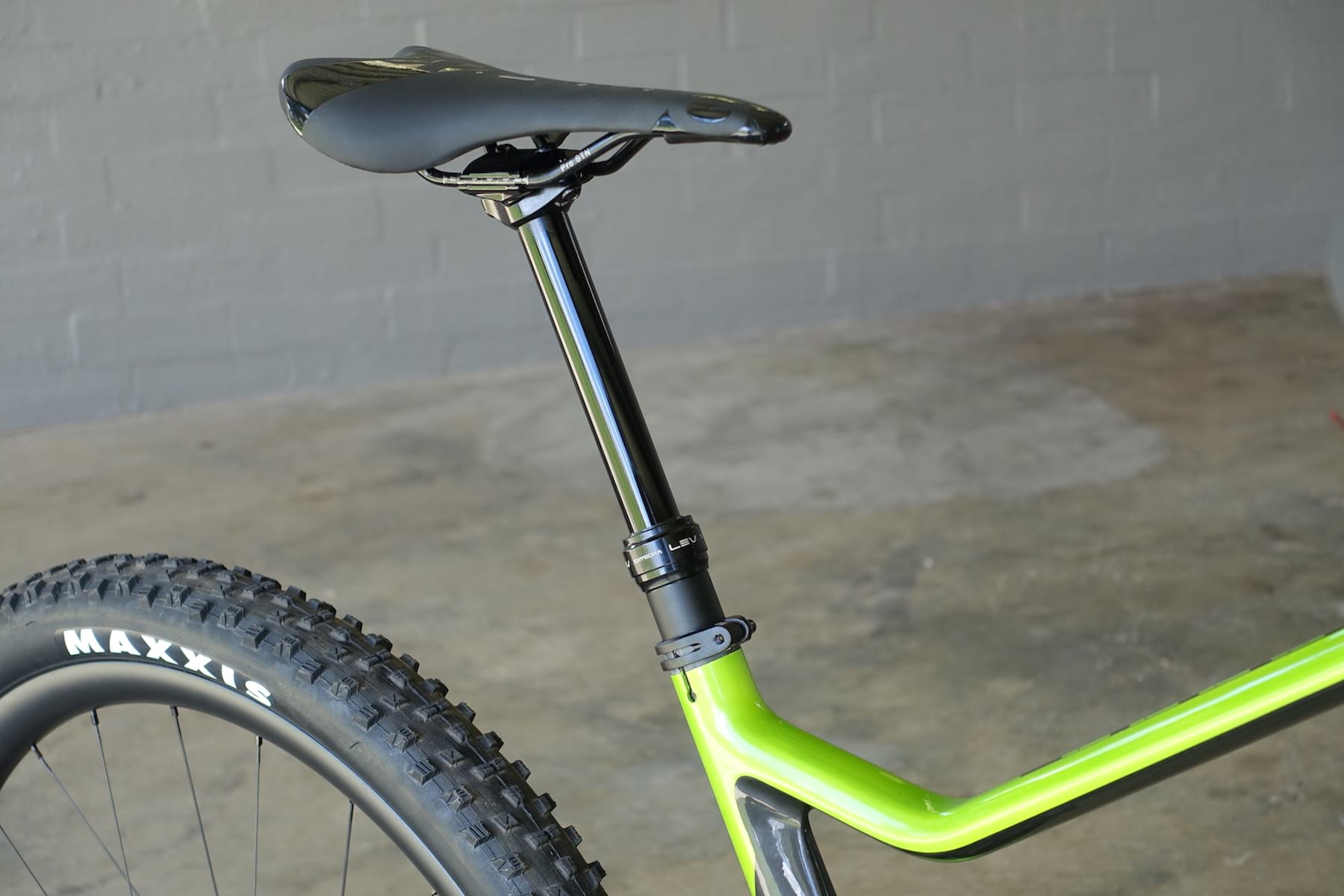
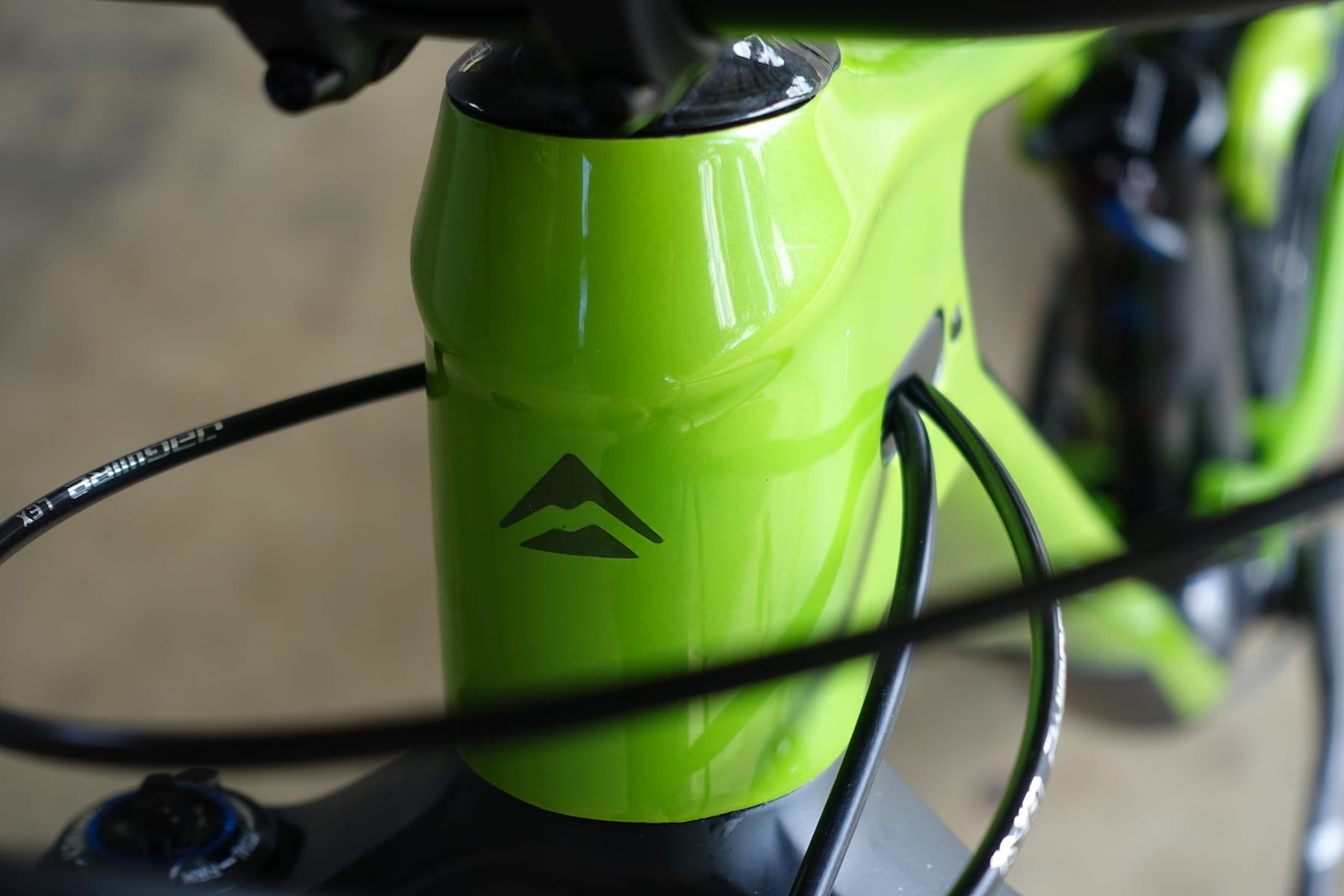
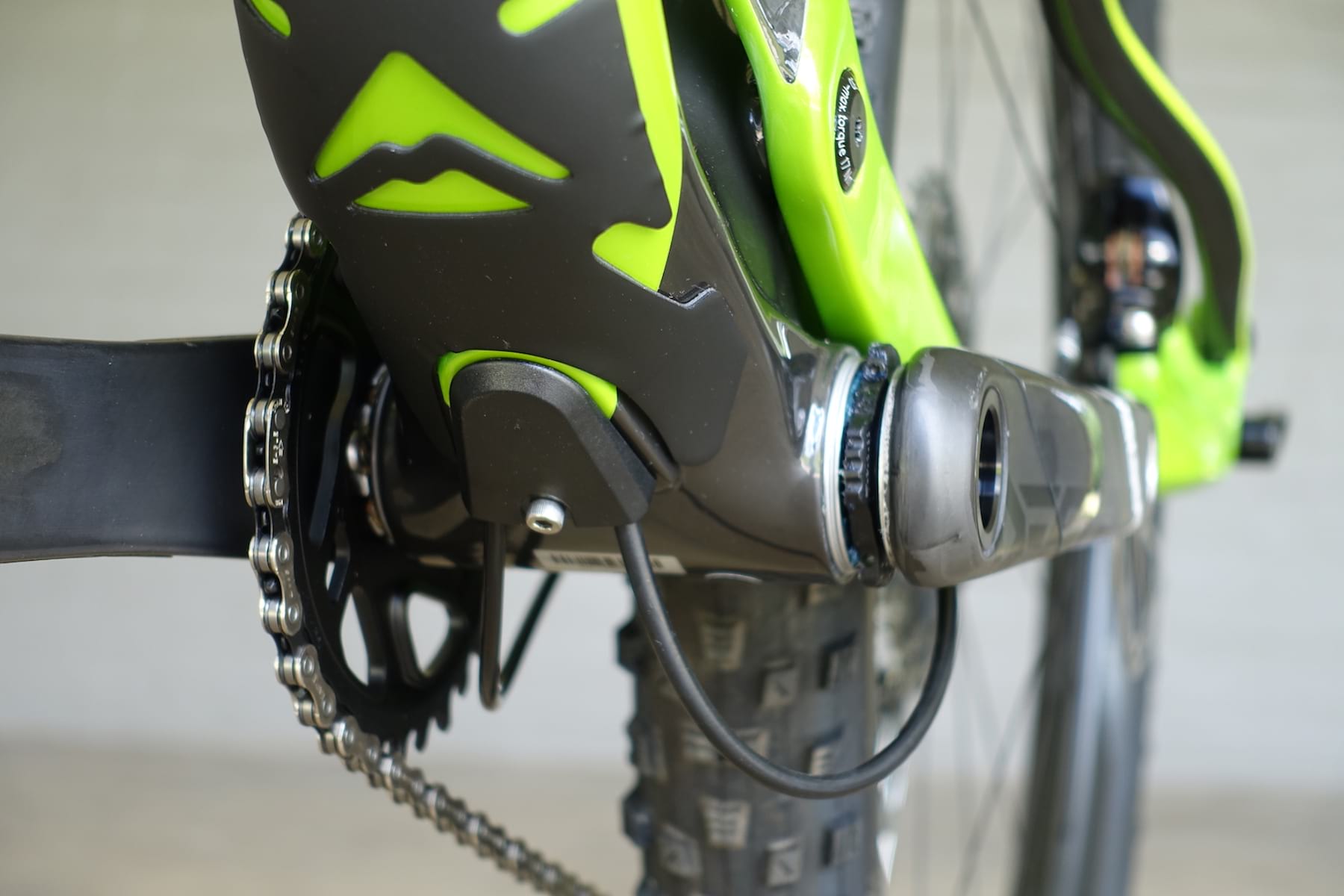

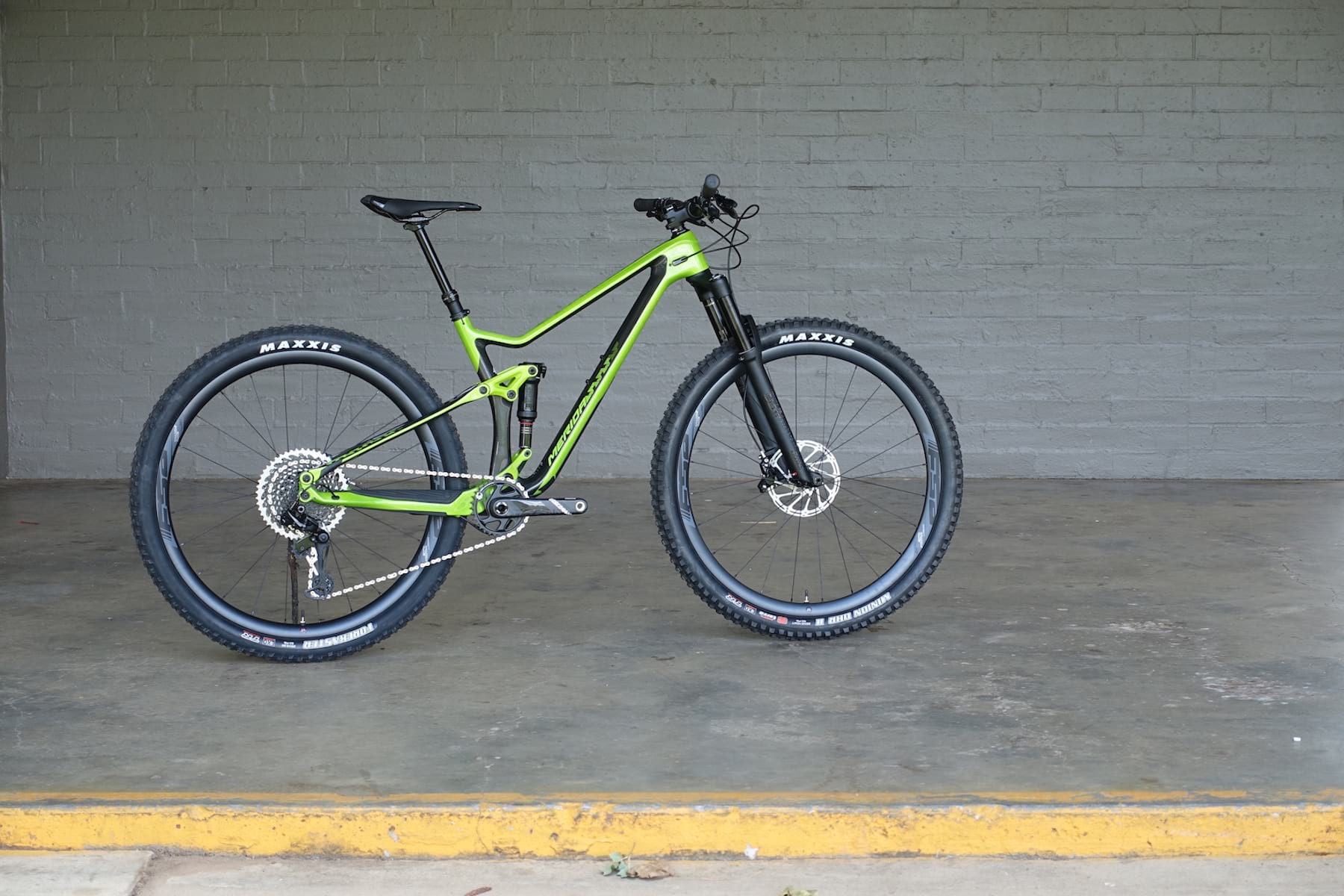
Looks tidy.
Would be nice if all brands quoted STAs at ride height – say a 150 dropper fully inserted and STA measured from BB to rail clamp? With all the offset, and radiused STs, it’s impossible to know what it would be like for you, as measuring BB to top of ST effective STA is in many cases meaningless.
Measuring to the rail clamp on a seatpost inserted to an average ride height would be far from perfect, but better than we have now.
That looks more like 73 than 75.5 at the height shown for example?
Good point ‘oldman! STA are generally being measured from the BB centre to the imaginary line extending horizontally from the top of the headtube, same line used by Reach and Stack measurements. Of course this intersection is no where close to where one rides their seat height so the posted STA is worthless. And there is NO WAY that the STA is anywhere close to what the industry is leading us to believe with the dog legged frames projecting the seat posts at wonky angles. STWorld can attach an angle finder to a straight edge and line it up.. done. Keep in mind that on many designs that have seat post towers the same for every size, the ‘effective’ seat Tube angle will change radically from size to size, with taller riders sitting over the rear mech.
@sillyoldman & @dustytires – Apologies for the delayed response on this! I’ve been waiting to hear back from Merida regarding the effective seat tube angle, and how they measure it, in order to get you an accurate response.
According to Merida’s head of Product Management, Reynaldo (Rey) Illagan;
“75.5 degree is when you make a horizontal line from the head tube. That how the bikes have been measured since ever.”
So you draw a straight, horizontal line from the top of the headset back towards and through the seatpost. Then you draw a line from the BB up to this intersecting point on the seatpost, and that produces your effective seat tube angle. Unless another brand states otherwise, this is typically how they’re measured.
Of course this isn’t really accurate, because you’re unlikely to run your saddle that low. And so because of the kinked seat tube, the ridgey-didge seat angle is always going to be slacker than what’s written in a geometry chart.
So I asked Rey what the effective STA would be with the saddle at a normal height, and he gave me a specific STA for each frame size, based on a ‘extreme saddle height’. That is to say, these are the tallest saddle heights Merida would recommend with each frame size – if your saddle height is higher, you really need to be on the next frame size up.
S: 74.5 (680mm)
M: 74 (730mm)
L: 73.5 (780mm)
XL: 73.5 (830mm)
I’m testing the Medium size One-Twenty, and my saddle height (BB to top of saddle, with the saddle in the middle of the rails) is 700mm. That means I’m a good 30mm under the maximum saddle height, and so my effective seat tube angle will be somewhere between 74-75.5 degrees.
All of that aside, there is of course a significant amount of adjustment that can be had with sliding the saddle forwards and backwards on the rails. About 1-2 degrees in most cases. And that’s the case whether a bike has a straight or kinked seat tube.
My personal opinion – at least on a trail bike like this – is that setting the saddle position should be about ensuring the rider’s knees are placed correctly over the pedals, both from a comfort and efficiency perspective. Though steep STA’s are all the rage at the moment, going much steeper on the STA will push the rider’s knees further in front of the pedals. In my experience that feels fantastic for going up steep hills, but can potentially cause discomfort elsewhere.
For my riding position on the One-Twenty test bike, I’m actually running the saddle quite far back on the rails to slacken out the effective STA. I’ve had to do this on a couple of test bikes recently, including the Canyon Neuron CF and Giant Trance 29, which in the default position were all too steep in the effective STA. The result was noticeable knee pain from being loaded at a more acute angle.
Might have to put together a tech feature about all this and chat with a few bike fitters and brands to get some more opinions – it’s definitely a hot topic!
[ST Wil]
Thanks Will.
The effective STA sounds optimistically steep to me – get your steel rule and angle finder app out!
As you say the traditional means of measurement is useless unless the ST is straight and is centred on the BB.
Would be interested to hear other brands’ opinions/approaches.
Cheers, Dave.